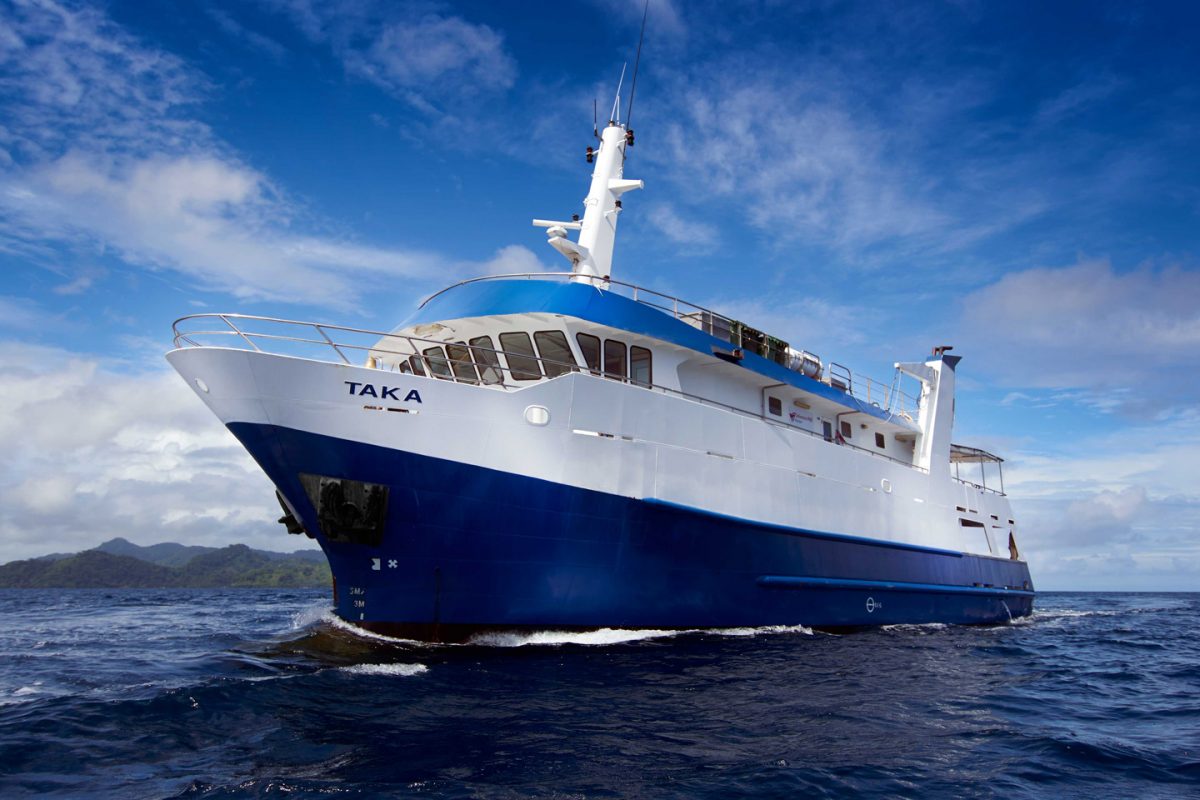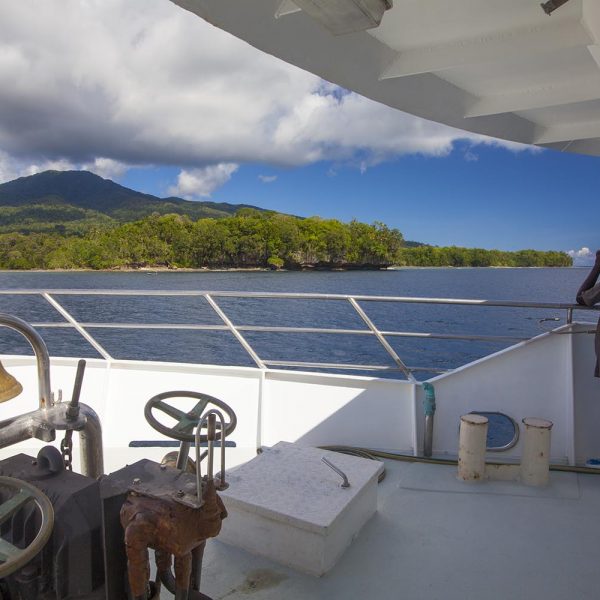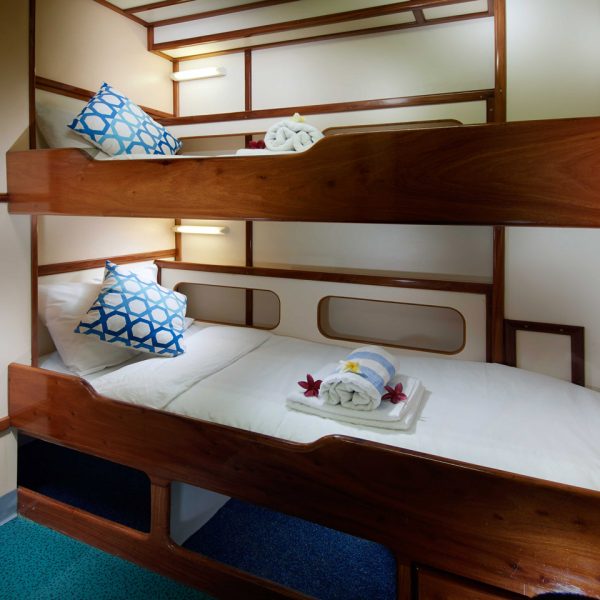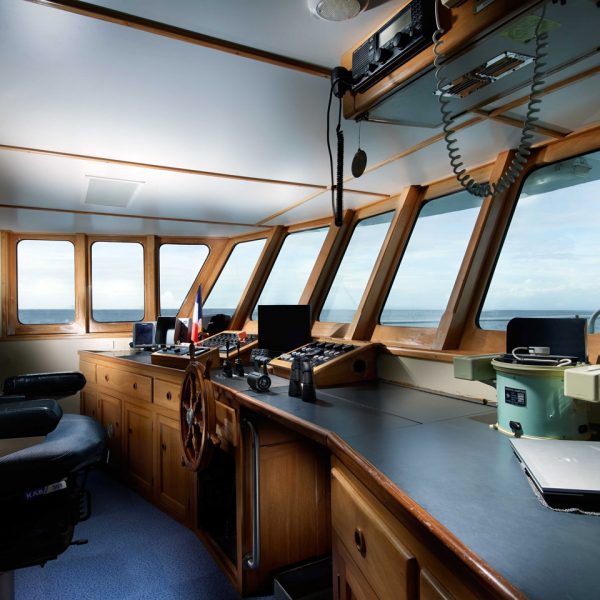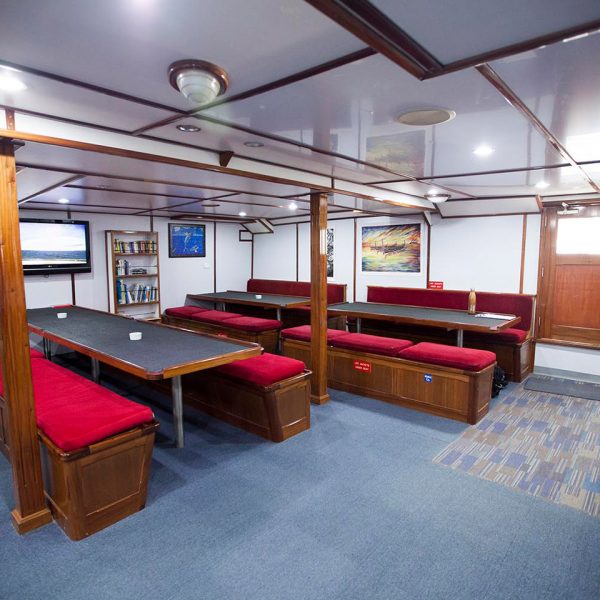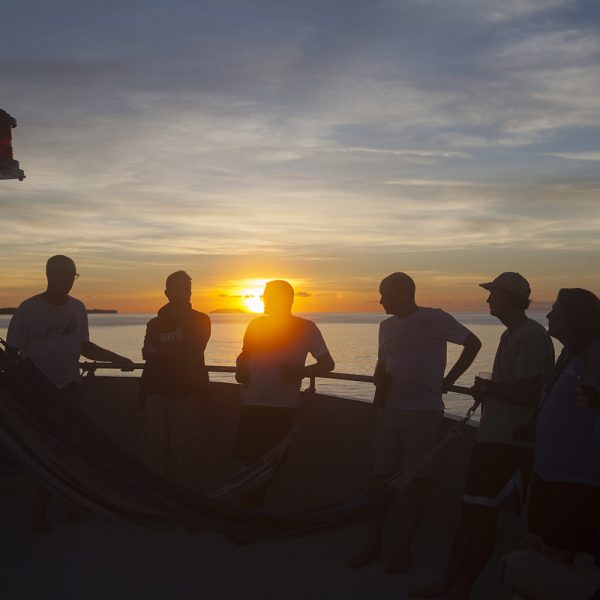Accommodations
Pacific Master (aka “Taka”) is equipped with 13 cabins accommodating up to 26 guests and a crew of 12 including your dive team, skipper, boat crew and chefs. There are four cabin classes onboard divided by the Master Suite and Deluxe cabins on the upper deck, and Standard cabins on the lower deck.
The Master Suite is the largest cabin and is located on the upper deck. This spacious suite has a double bed, private sitting area, lots of storage and a full ensuite.
Deluxe cabins, also located on the upper deck are spacious and feature a double bed with a twin bunk above (note: cabin 1 is fitted with two twin bunks only) and are suited towards a couple or buddy team. Each cabin has a small seating area, ample storage and a full ensuite bathroom.
Standard cabins, found on the lower deck each have two twin bunks (note: cabin 7 has a double and a twin) and are best suited towards more economy travellers. 5 bathrooms equipped with toilet, sink and shower are shared, located off the dive deck.
Dining
Meals are served buffet style and the chef offers a combination of local and international foods. Healthy, fresh and abundant are the themes from the kitchen. A wide variety of snacks along with coffee, tea, and bush-lime juice are always on offer. Three warm and hearty meals are served daily and snacks are always ample. The menu will include a selection of local vegetables, pork, beef, fresh fish (often caught right off the boat), chicken, pasta, rice, homemade bread, scones, biscuits and of course, tea, coffee, hot chocolate and all the usual condiments to complete the meal. A sample menu is available here.
Galley staff are also prepared to assist with special menu requirements, but it is best to provide us with plenty of advance notification of special dietary requests, to ensure that arrangements can be made and supplies obtained. The ship is fully stocked with spirits, beer and wine as well as soft drinks, for an additional fee.
Amenities
Other indoor spaces include a huge dining area and lounge with dedicated spaces for photographers camera gear and charging. Two large screen TVs are in place for divers to share their photos and video. Outside you can relax on the covered seating deck or head up to the observation area and lounge in a hammock as the islands go by.
If you need a few minutes to recharge from diving, you will have the opportunity to visit villages and meet the local people, experience their lifestyle and perhaps buy some local produce or carvings. A fun event is always a swim or a game of footy with the local children. If you like fishing, the crew will gladly take you out for some early morning or evening hand-lining for tuna or wahoo – plan on having your catch for sashimi that evening.
Diving from the Pacific Master
The huge dive deck has ample room for all divers and has generous storage space, toilets, and is rebreather friendly. Treat yourself to a post-dive hot water shower, right on the dive deck! The majority of the diving is done from directly off the deck, as opposed to from skiffs. There is an open dive deck policy which means you can set your own dive schedule. Your only limit is common sense and dive safety. A skiff is in the water at all times to support diver pick up and gear handling and to offer additional comfort and safety. Staff lead most dives, but you are free to explore dive sites at your leisure (within the confines of your training and experience).
‘Valet Diving’ is the norm here; The only time you have to touch your tank is when you’re diving and it’s on your back! Tanks are filled at the end of each dive then rigged for the next one. The crew is trained to expertly handle your tanks and other gear.
Diving in Truk
Truk is best known for its world-class wreck diving and with over 60 wrecks, from supply vessels (Maru) to planes and a submarine, tightly packed into a coral reef lagoon. It is easy to appreciate why divers travel to this area time and time again. During WWII, the Japanese fleet used Truk as one of their main staging points for attacks on the allied forces but in 1944 the American led “Operation Hailstone” surprised the fleet resulting in the plethora of dive sites which we can see there today.
Many historical artifacts such as medicine bottles and newspapers along with articles of war, which include aircraft wings for the Zero Fighter planes, tanks, guns, gas masks and ammunition, can still be found at many of the sites. Whilst the wrecks themselves are encrusted with corals, you can still clearly see telegraphs, steering columns and mounted guns. There is also the opportunity to explore engine rooms and holds. Surrounded by a coral reef, there are many excellent coral pinnacles and deep channels with schooling pelagics too! Experience the Wreck Diving Capital of the World with the Truk Master and dive deeper into history!
Diving in Bikini Atoll
For several months a year (usually April to early September), the Truk Master will explore the famed Bikini Atoll, only suitable for qualified Tech divers.


